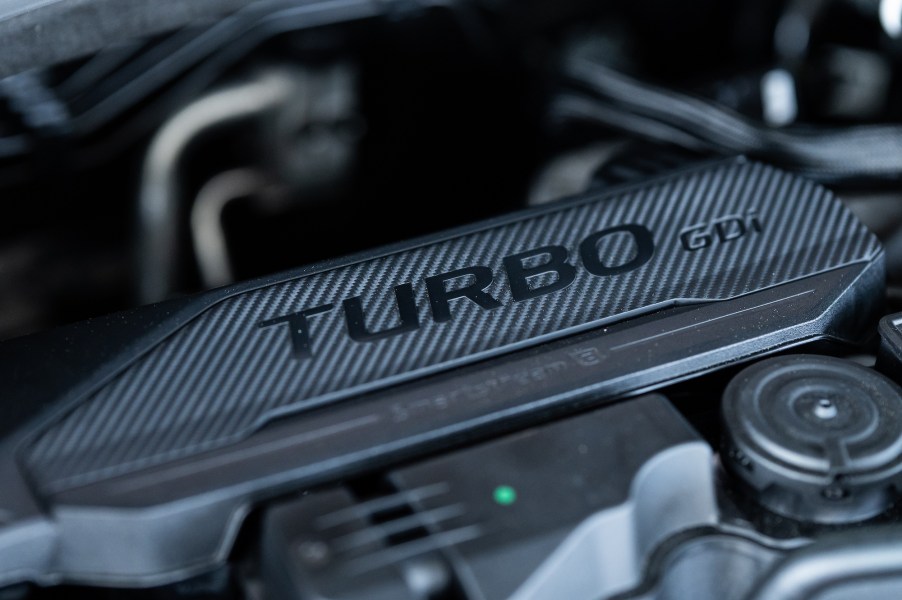
What Is Turbo Lag?
Some critics see the benefits of having a turbocharged engine, especially a smaller one. However, the drawbacks can be pretty frustrating. One drawback is the turbo lag you get when accelerating down the road. How do turbocharged engines work, and how does turbo lag affect your driving?
Why do drivers choose vehicles with turbocharged engines?

Turbocharged engines are becoming more popular because many automakers know you could get the extra power boost and still enjoy decent fuel economy ratings. This ultimately improves the car’s driving experience by reducing the vehicle’s weight with a smaller engine.
According to Cummins website, exhaust gases will spin the turbine wheel with a turbocharged engine, which will spin the steel shaft that connects to the compressor housing. The compressor wheel will begin turning and drawing in air, moving through the housing, where it will get compressed.
The compressed air will get pushed from the housing into the engine, which will burn more fuel, increasing the power produced. That’s why smaller engines are chosen, as you get the same energy as a larger one would generate.
What is turbo lag, and why could it be a problem?
According to MotorTrend, turbo lag occurs during the time it takes for the turbocharged engine to produce compressed air and the time it actually receives it. In a naturally aspirated engine, you get torque back when you ask for it through the accelerator pedal. But, when you factor turbo into it, there’s a wait time while your vehicle produces the boost you want.
You’ll still get power, but what you get will be on the low side while waiting for the turbo to deliver. It’s not going to respond immediately, which can sometimes be frustrating. Once the boost comes, your car will suddenly lunge forward as it gets up to speed.
While it would be nice to build a turbo engine that could immediately deliver the boost, it’s not as simple as you think. MotorTrend reports that a turbo setup like that would require a specific range of RPMs. The problem with the current stock of turbo engines is that they would either explode from Overspeed, or it would take much longer for the boost to show up. Instead, the lag we typically face is a happy medium of sorts.
Can you overcome turbo lag?
While there isn’t a solution to eliminating turbo lag at this time, there are ways that you can reduce it as much as possible. But, they might come with a bit of a sacrifice. For example, higher compression ratios are an excellent way to help minimize the lag time, but with the added pressure, you increase the risk of engine knock, which is bad for the unit. Lowering the ratios could affect fuel efficiency.
On the other hand, narrowing the powerband could prove to be quite useful in reducing the lag times. In an engine with a constant airflow rate, turbochargers with a narrowed powerband could already run at the vehicle’s power range. So, the waiting time to get up to speed will be much shorter than it would typically be.
The most common route some owners take is by using nitrous oxide, which will cause the cylinder pressures to flip out. The extra energy spools a turbo almost instantly. The only issue is that you must ensure your air/fuel ratio is correct with the added oxygen in the system. If it’s not, you will get backfire from the engine, and it could essentially be damaged.
Turbocharged engines have proven helpful in various types of automobiles, but they also have some drawbacks, like turbo lag. To help reduce some of that lag time, adding nitrous oxide, narrowing the powerband, or increasing compression ratios might shorten the wait times quite significantly.


